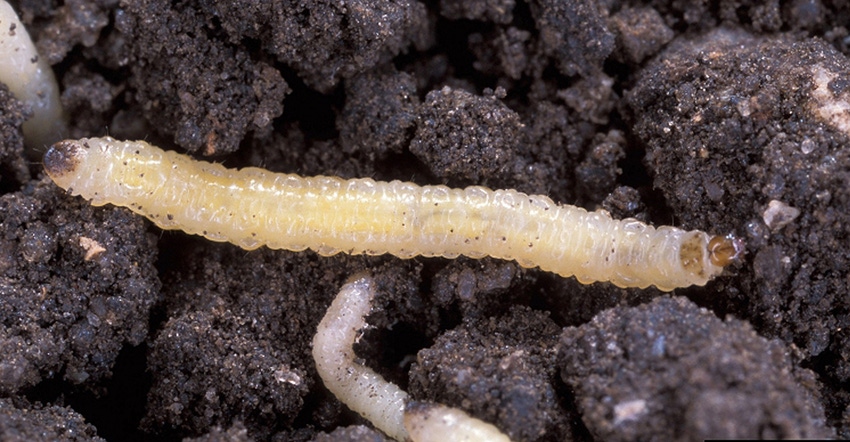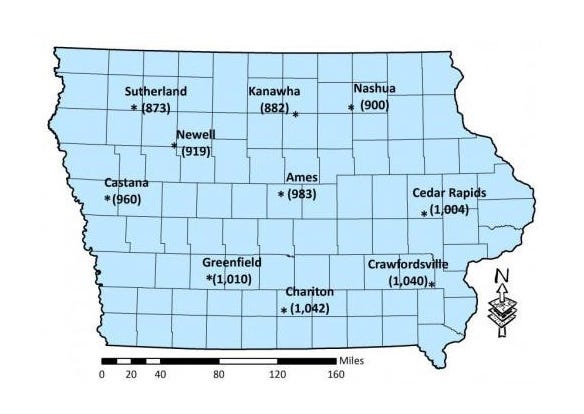June 19, 2018

Adult corn rootworm beetles lay eggs in soil during summer, and the eggs overwinter and hatch the next spring. The larvae that emerge feed on corn roots, injuring the root system and hurting corn yield.
Corn rootworm eggs in Iowa typically hatch from late May to the middle of June, with an average peak hatching date of June 6 in central Iowa. In 2018, the average hatching date is ahead of normal, despite having cool April temperatures.
Development of corn rootworm hatch is driven by soil temperature and measured by growing degree days, says Erin Hodgson, Iowa State University Extension entomologist. Research suggests about 50% of egg hatch occurs between 684 and 767 accumulated degree days (base 52 degrees F soil). Most areas in Iowa reached peak corn rootworm egg hatch this year by the end of May or early June. Corn rootworm larvae hatch from the eggs, and the tiny worms (larvae) start feeding on corn roots if the roots are available.

SOIL DEGREE DAYS: This map shows the accumulated soil degree days in Iowa as of May 29. Half of the corn rootworm egg hatch occurs between 684 and 767 degree days.

Once hatched, rootworms seek corn roots to feed on and can be best found by digging roots and doing a float test. Look for root feeding 10 to 14 days after peak hatch.
A severe corn rootworm larval infestation can destroy four to six nodes on a corn plant, says Hodgson. Each node has approximately 10 nodal roots. Root pruning interferes with water and nutrient uptake and makes the plant unstable. A recent analysis showed a 15% yield loss for every node pruned.
Scout every cornfield
Regardless of agronomic practices used to suppress corn rootworm (such as crop rotation, planting Bt rootworm tolerant corn hybrids, or using soil-applied insecticides), every field of corn should be scouted for signs of root injury caused by corn rootworm.
“Fields with continuous corn and areas with Bt performance issues are the highest priority for inspection,” Hodgson says.

ROOT ROBBER: Severe root pruning by corn rootworm larvae can dramatically impact corn yield.

Looking at corn roots 10 to 14 days after peak egg hatch is encouraged because the feeding injury will be fresh. “You need to assess the corn rootworm feeding in your fields and adjust your management strategies if the average injury is above 0.5 on a zero-to-3 rating scale,” she says. “Also, consider monitoring cornfields on your farm for adult corn rootworm moths this summer. The information you gather about adult corn rootworm moths can be used to supplement your corn root injury assessments.”
Aaron Gassmann, ISU corn entomologist, has a web page with additional corn rootworm management information, including an interactive node-injury scale demonstration and evaluations of insecticides and other rootworm control measures.
Source: Iowa State University
You May Also Like




